On this page:
Off-road vehicles (ORVs) are increasingly popular across British Columbia, both for work and leisure purposes.
British Columbia’s Off-Road Vehicle Management Framework promotes the safe and responsible use of ORVs on Crown land and prescribed private lands.
The ORV Framework brings:
The new Off-Road Vehicle (ORV) Act and Off-Road Vehicle Regulation is central to implementing the ORV Management Framework, along with opportunities to connect rural communities and ORV trail systems through improved road access, where appropriate:
ORV laws now apply to a wide range of vehicles used or operated for work or leisure purposes on Crown land and prescribed private land. Under section 2 of the ORV Regulation, ORV’s include :
Effective Nov. 1, 2015, ORV owners must register vehicles used on Crown land and clearly display their ICBC number plates or stickers. Registration services are provided by ICBC’s Autoplan Brokers for vehicles prescribed under the ORV Act (e.g. snowmobiles, off-road motorcycles, all-terrain vehicles and side-by-side ORVs).
New safety requirements under the Off-Road Vehicle Act and its regulations include,

Spark arrestors under the Wildfire Act:
For information about alerts and closures on Crown land, helpful contacts include:
ORV enthusiasts are encouraged to check out Recreation Sites and Trails BC to find information about where to ride on Crown land.
No one ever expects to get into trouble in the backcountry. But, a turn in the weather, unexpected injury, equipment failure, vehicle mishap, or nightfall can quickly change any ORV outing on Crown land into a crisis. A trip plan is needed before heading outdoors - check out Adventure Smart for details.
Note: ORV Registration also supports search and rescue efforts in finding lost or injured riders if the abandoned ORV is found first.
New enforcement tools enable officers to address contraventions more effectively under the ORV Act. These include:
Under section 8 of the Wildfire Regulation, a contravention for not having a spark arrestor installed in the engine exhaust system of an ORV could result in a violation ticket fine of $460 or an administrative monetary penalty of up to $10,000. If a wildfire starts, the ORV operator may also receive a court fine up to $1,000,000 and/or up to three years in jail.
If a wildfire starts, the ORV operator may also receive a court fine up to $1,000,000 and/or up to three years in jail.
Anyone who witnesses a violation of the ORV Act is encouraged to call the Conservation Officer Service and Natural Resource Violations hotline at 1-877-952-7277, or #7277 on the TELUS Mobility Network.
Legal access to trail systems has always been a balancing act. Upon the delivery and inception of the new ORV Act in B.C. in 2014, some grey areas have prompted the Quad Riders Association of British Columbia (ATVBC) to work with provincial lawmakers to figure out solutions to recurring access problems.
With the revisions presented in the new ORV Act, the issue of crossing roads legally has been mostly addressed, with some fine tuning in the works. OHV riders can now legally cross public roadways, provided registration and insurance requirements have been addressed. This is great, but what if there could be more?
Mike Coulter of Campbell River, B.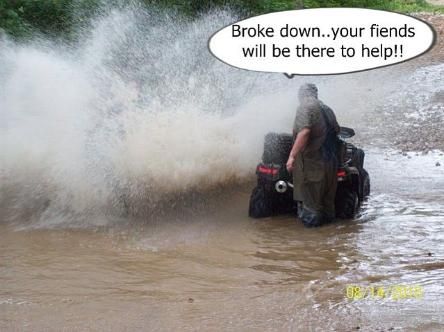 C., had a vision that would affect motorized recreation in British Columbia. As the past president of the Campbell River ATV Club and the North Island representative for ATVBC, Coulter is beyond passionate about ORV tourism in British Columbia.
C., had a vision that would affect motorized recreation in British Columbia. As the past president of the Campbell River ATV Club and the North Island representative for ATVBC, Coulter is beyond passionate about ORV tourism in British Columbia.
Initially, his focus was on North Island tourism, but as word of his efforts spread, many communities throughout B.C. have expressed interest in ORV tourism and what it could mean for the province. Linking B.C. towns together by designated ORV trails could mean a huge economic boost for many areas.
“When you embark on a 1,000-kilometre loop in the North Island, you will visit at least eight separate communities,” said Coulter. “There are basic needs such as food, fuel and lodging in addition to other consumer spending. This is huge for many rural towns that need economic stimulus.”
Mike Coulter is a passionate rider from Campbell River, B.C. — photo courtesy Mike Coulter
The idea of ORV tourism isn’t a new concept as there are many successful initiatives in existence, such as the Hatfield-McCoy Trail in West Virginia. On that trail system, only nine per cent of the riders are from West Virginia, with the remaining 91 per cent being tourists from Canada and the United States. The tourist attraction grosses over $9 million per year that is directly associated with this initiative.
On that trail system, only nine per cent of the riders are from West Virginia, with the remaining 91 per cent being tourists from Canada and the United States. The tourist attraction grosses over $9 million per year that is directly associated with this initiative.
In 2000, the town of Gilbert, West Virginia, had 16 motel rooms, one gas station and one restaurant. By 2008, after the development of the Hatfield-McCoy trail system, there were 130 motel rooms, multiple restaurants, a cinema, a grocery store, a large RV park and two auto repair shops.
“ORV tourism is huge,” said Coulter. “Why are we sending people to places such as Mexico, Utah, Oregon, California and Alberta when we have everything we need right here to create the same experience with just a bit of adjustment needed to the existing ORV Act?”
Tourism potential doesn’t simply end with a guided trail ride. Tourism operations, such as zip line adventures, fishing, hiking, hot springs, wine tours, whale watching and local attractions will all see an influx of visitors. This is huge for B.C., which has so much to offer. With our dollar being desirable to visitors from the U.S., British Columbia will be the logical choice for family vacations.
This is huge for B.C., which has so much to offer. With our dollar being desirable to visitors from the U.S., British Columbia will be the logical choice for family vacations.
“Many families enjoy getting out on their ATVs and side-by-sides for vacations,” said Coulter. “Ask a child from an outdoorsy family what they’d choose, Disneyland or an adventure on their ATV? The ATV will win hands down! We just need to create access to our existing trail systems, streamline the permitting process and increase signage for designated ORV routes.”
As it exists right now, a specific Operation Permit, MV1815, can be issued for those wanting to traverse public roadways to link to existing trails. Many of the trails in B.C. don’t line up according to the requirements needed in the ORV Act even if there were simply a few metres of variance, it would be considered an illegal crossing and a permit would be needed.
“Some may think, ‘Well, I can just scoot across, no one will notice,’ but if an incident should occur, it is imperative that riders are aware that they must operate within the scope of the law or liability insurance coverage will be null and void,” said Kim Smith, who is the land and environment co-ordinator/general manager of ATVBC.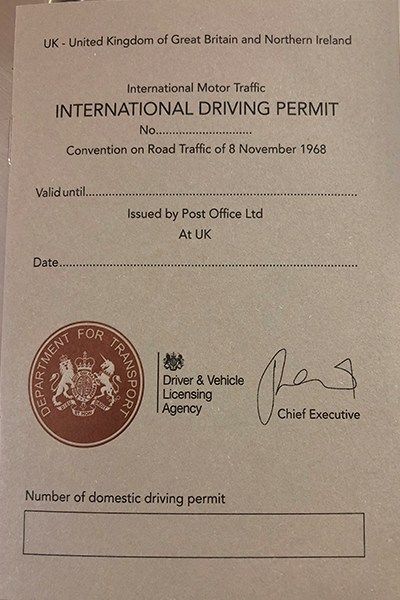
The permits are free, and last up to two years and are issued by the local RCMP detachment. This seems like an easy fix for those non-conforming crossings, but the challenges with such a system are many:
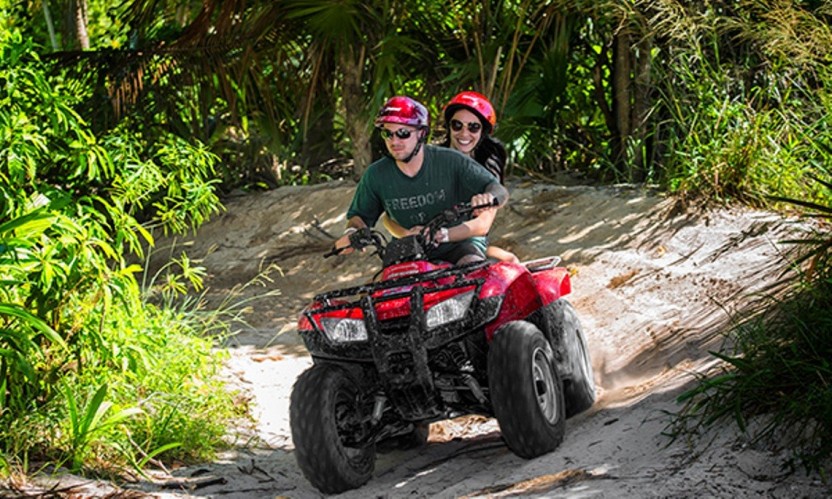
Who is the rider of today? If you search mainstream media articles relating to ORV use, you’ll probably see a picture or two of helmetless riders ripping up the land and disrupting spawning channels of freshwater streams, with an obnoxious aftermarket exhaust proudly displayed. No wonder some people may feel a little hesitant about supporting more access for ATVs and side-by-sides.
Is this really what ORV riders are like?
“The majority of ORV riders in British Columbia are over the age of 50 and want to get out into the backcountry and continue to enjoy life,” said Coulter. “We see many riders who’ve lost mobility due to age, illness or injury who need to be able to enjoy nature, as they’ve always done.”
“We see many riders who’ve lost mobility due to age, illness or injury who need to be able to enjoy nature, as they’ve always done.”
Hardworking organizations such as ATVBC are creating a new image for ORV riders in B.C., including retired riders, families and individuals who simply want to get out into nature respectfully and legally.
What do we need to move forward?
B.C. already has the infrastructure in place, with numerous logging and forest service roads acting as safe trail systems into the backcountry. Very little is needed from an infrastructure perspective except signage. The process needs to be more user-friendly and allow for municipal levels of government to have more discretion as far as permit processing.
Thanks to the efforts of the Campbell River ATV Club, riders with an operation permit have access, via designated routes, to food, fuel and accommodation in the community of Woss, which is on North Vancouver Island. — photo courtesy Mike Coulter
“We need to streamline the process to make it easier and more cost-effective,” said Coulter. “Rather than leaving the RCMP with the burden of time-consuming paperwork, we’d love for local municipalities to have more influence on the permitting and legislation, allowing ORV access to food, fuel and lodging on specific designated routes.”
“Rather than leaving the RCMP with the burden of time-consuming paperwork, we’d love for local municipalities to have more influence on the permitting and legislation, allowing ORV access to food, fuel and lodging on specific designated routes.”
Rather than permits issued from separate law enforcement detachments, it is a suggestion of ATVBC to designate trail systems and require one permit for each designated trail to better facilitate tourism and the permitting process.
The dream many have for riding on public roadways and utilizing ORVs as grocery getters is a long way off, mainly due to the astronomical cost of insurance. However, access to food, lodging and fuel on designated routes is a goal that is obtainable and already happening in communities such as those on the North Island and Elkford. Efforts of ATVBC and Mike Coulter are creating even more opportunities for ORV use and tourism in B.C. The 2018 Annual ATVBC Spring F2F Conference is focused on the theme “Developing, Promoting and Growing Responsible ORV Tourism in BC. ”
”
Support your local ATVBC club to facilitate initiatives such as these. More information can be found on the ATVBC website.
Five two-seat ATVs available to order. And one person, for example, a girl who does not want to drive an ATV, can ride with an instructor. Up to 11 people can go on the route at the same time. The rest at this time can fry kebabs, go to a small zoo, visit a 5D cinema or shoot at a shooting range.
For safety reasons, you must be accompanied on the route by an instructor on a separate ATV. He will show you all the most interesting places and will try to make your trip rich and memorable.
Yes, we have two seater quads and if you are traveling as a couple you can change seats and take turns driving the quad.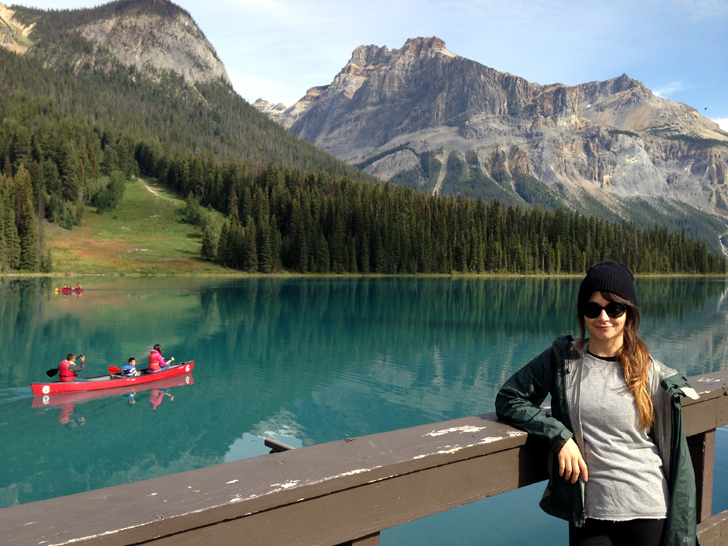
Your passport is required to sign an ATV rental agreement.
We are open all year round, any day and in any weather. All the necessary equipment is provided in accordance with the season: helmets, balaclavas, gloves, mud protection suits. Do not try to adjust your vacation to the weather, in the forest everything is perceived differently than in the city. The worse the weather, the more lucky you are, your ATV trip will be more emotional and memorable. nine0005
ATV must be operated by persons over 16 years of age. Children under 16 ride only with adults.
An ATV is a vehicle just like a car. Persons under the influence of alcohol or drugs are not allowed to drive.
We travel along village paths, forest paths and off-roads.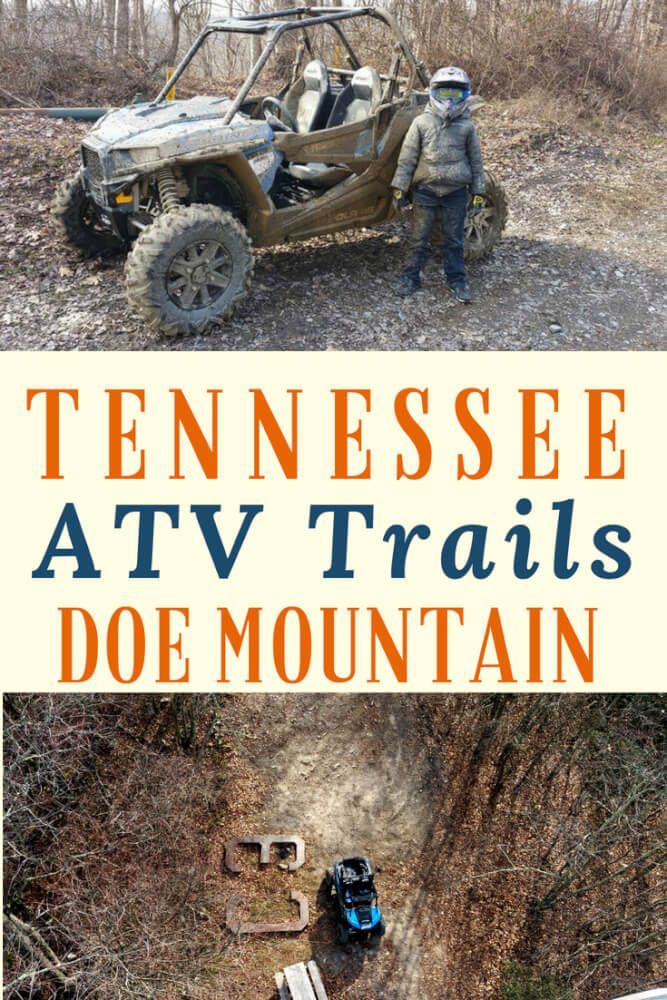 We try not to travel on public roads. We formalize the rental as training in driving an ATV.
We try not to travel on public roads. We formalize the rental as training in driving an ATV.
The ATV is a vehicle that is very easy to drive. We guarantee that under the guidance of our experienced instructors, any girl will be able to independently control an ATV on her first trip. nine0005
All of our quad bikes pass the State Technical Inspection every year, our instructors have been trained and have special rights to drive an quad bike. And the technical condition of ATVs plus professional instructors is a complete guarantee of your safety during ATV rental.
No, changing into protective clothing, getting to know the basics of driving an ATV, safety briefing take place at extra time. nine0005
Quad biking is an exciting all-season adventure that will allow you to actively and have fun, feel the adrenaline rush and find a good mood! Ride through the picturesque forest, spacious fields and get the maximum charge of positive emotions!
To order
Anyone who wants to unwind and relax
Beginners to learn a new mode of transport
Nature lovers
The best technicies
Califier double ATVs in ideal technical condition
Free equipment
helmet, disposable gloves and protective costume
Online-caring
Convenient reservation system, Actual skiing schedule with free areas
Proximity CITY
Travel time by car from the ring road 10-15 minutes, availability of public transport
Duration 1 hour
30 minutes before the start of skiing
Before you go skiing, you must carefully prepare for the race: sign a rental agreement, change into special equipment and undergo a detailed briefing. For ATV riding, a special dust and mud suit is provided, as well as a helmet for safety reasons. Further, directly at the ATV, a briefing is held, where the instructor will tell you the nuances of control and clearly demonstrate how to control the ATV. nine0005
For ATV riding, a special dust and mud suit is provided, as well as a helmet for safety reasons. Further, directly at the ATV, a briefing is held, where the instructor will tell you the nuances of control and clearly demonstrate how to control the ATV. nine0005
Skating
Quad bike rides are carried out along the natural relief of the Leningrad region with overcoming natural obstacles: narrow forest paths, puddles, descents and ascents of hills, unexpected turns. In order for each participant in the race to get used to driving an ATV, at the beginning of skiing, the route runs through open areas of the terrain: a field, dirt roads. After everyone has adapted to the controls, we leave for the forest, where the real adventure begins. nine0005
Halfway stop
In the middle of the route we always make a stop so that you can switch places "driver-passenger", so that everyone can be a driver. And who does not plan to change places, will have time to take cool photos for memory.
Continuation of skiing
Riding through the forest, maneuvering between trees, enjoying the beauty of wild nature and breathing clean forest air. Upon returning to the rental point, we will accelerate on the field so that you feel the drive from the control. nine0005
Finish
Share emotions and thank each other for skating
Book
How many ATVs are riding at the same time?
With an increase in the number of ATVs in a race, both the speed of movement and the personal attention of the instructor to each participant decrease. Therefore, in order to make the skiing for you as comfortable as possible while maintaining a high pace of the route, we conduct skiing in groups of up to 4 pieces of equipment. nine0005
Can I manage?
There is a detailed briefing before the ride, and during the whole ride you will be accompanied by our experienced instructor who will help you in any situation. Simple controls that everyone can handle. According to the legislation of the Russian Federation, persons over 18 years old are allowed to drive an ATV.
According to the legislation of the Russian Federation, persons over 18 years old are allowed to drive an ATV.
Ride on your own?
You always drive the quad bike on your own, but our instructor will accompany you on the route so that you do not get lost. The instructor will check the safety and help you if you have any difficulties. nine0005
At what age can children go skiing?
Children are allowed as passengers from the age of 5, while the child must be able to independently firmly hold on to the handles of the passenger seat.
What is the best weather for skiing?
There is no bad weather for quad biking, spring, summer and autumn are always interesting. In dry and hot weather, we enjoy nature and ride along clean forest paths, which is ideal for those who do not want to get dirty. In autumn, after rain and during light precipitation, we rejoice at the appearance of puddles and interesting water fumes on the route. In any situation, the main thing to remember is that the weather outside the city in the forest is very different for the better from what is happening in the gray city.